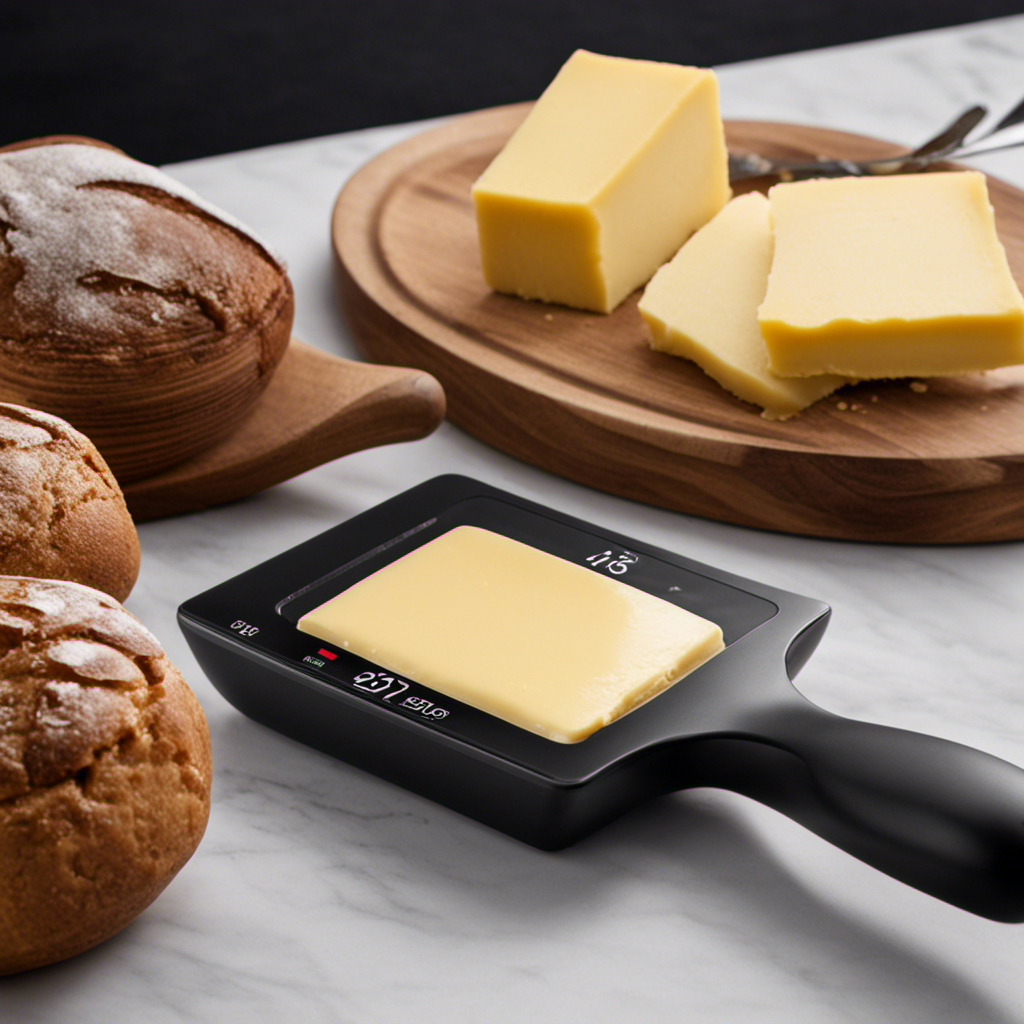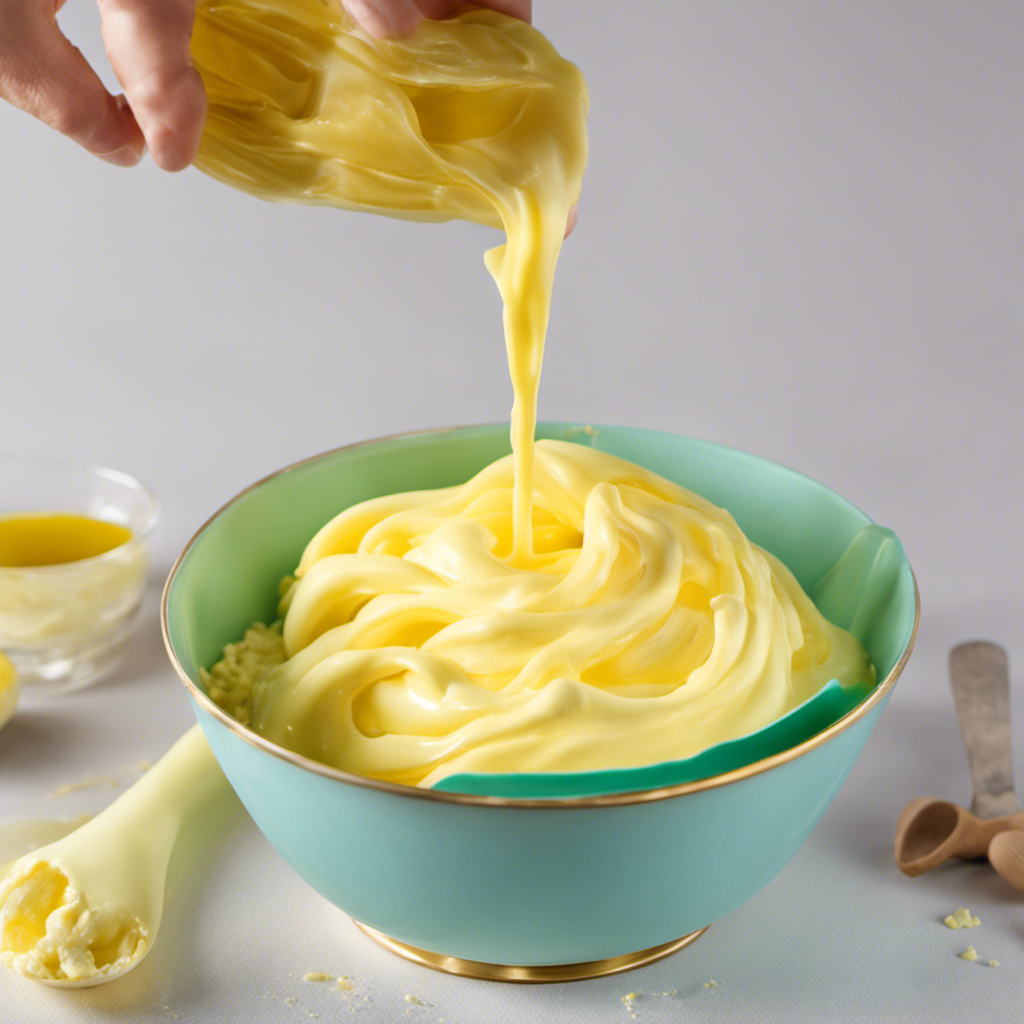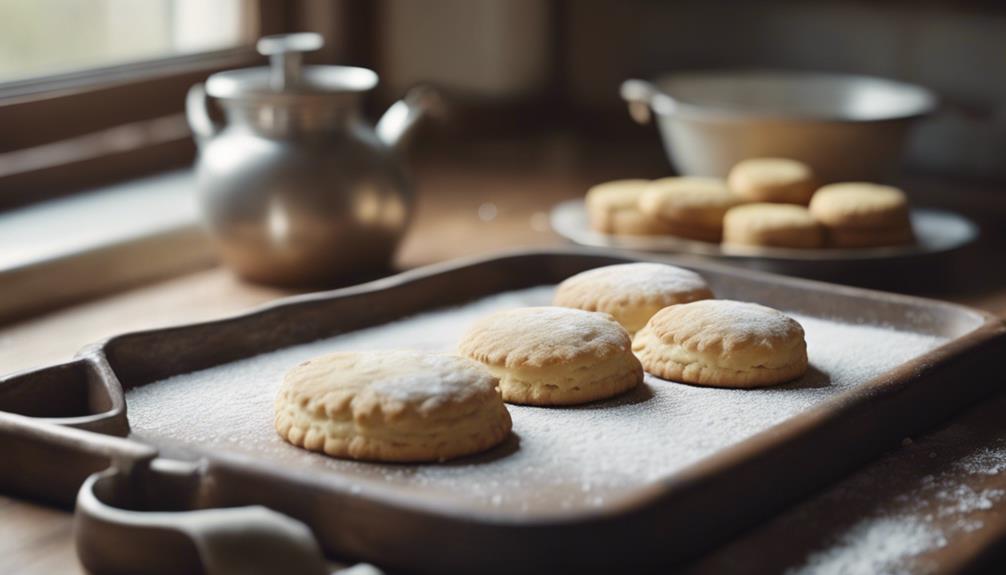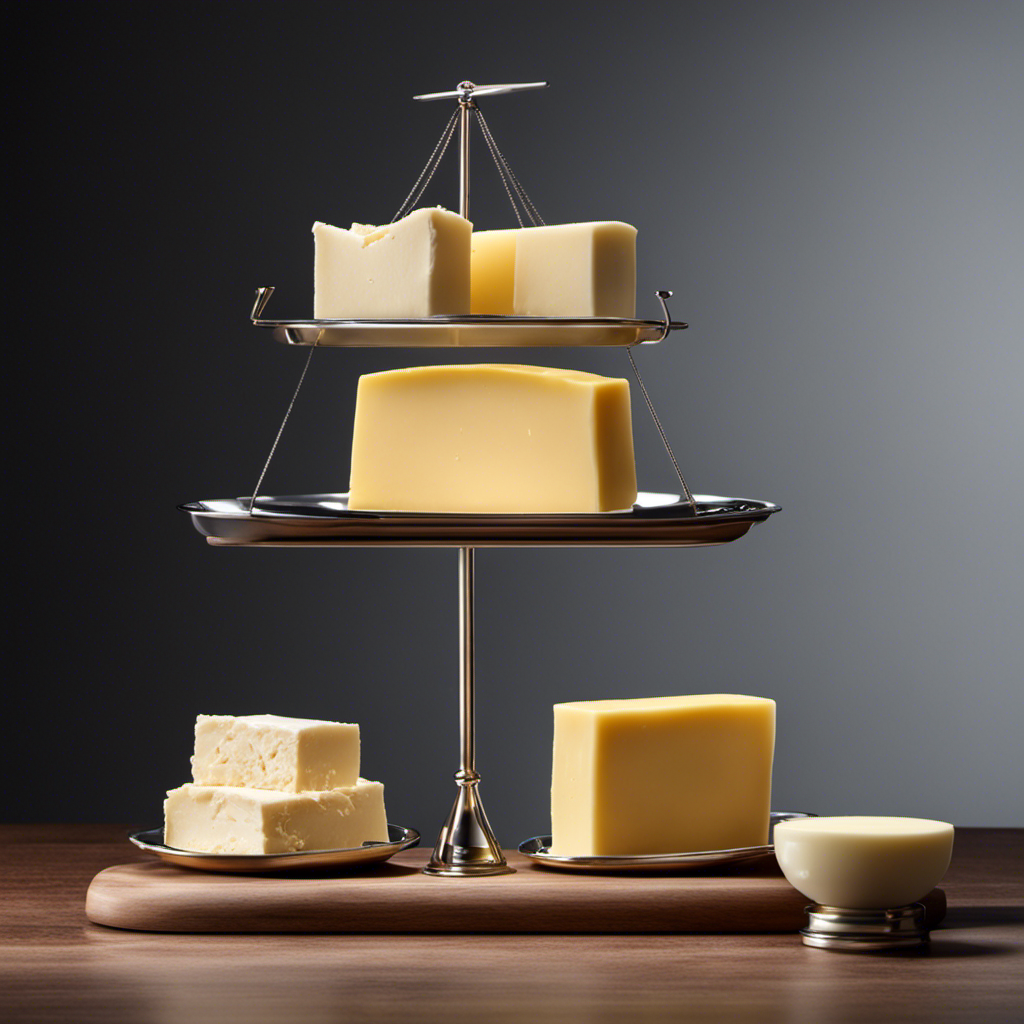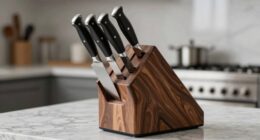As I explore the realm of butter and its impact on recipes, the phrase ‘butter makes everything better’ comes to mind. But just how heavy is 6 tablespoons of this delightful golden ingredient?
Join me on this informative journey as we explore the conversion of tablespoons to grams, how to accurately measure butter for recipes, and the variations in weight among different butter brands.
Let’s uncover the secrets behind the weight of butter and equip ourselves with the knowledge to create delicious dishes with precision.
Key Takeaways
- 6 tablespoons of butter weigh approximately 85.08 grams.
- Different types of butter may vary slightly in weight due to factors like moisture content and brand.
- Accuracy in measuring butter is crucial for taste, texture, food safety, and nutritional content.
- Tablespoon conversions are a reliable method for accurately measuring butter and achieving consistent results.
Conversion of Tablespoons to Grams
You’ll need to convert 6 tbsp of butter to grams to determine its weight.
To convert tablespoons to grams, you can use the fact that 1 tablespoon of butter is equal to 14.18 grams. Therefore, to find the weight of 6 tablespoons of butter, you can multiply 14.18 grams by 6.
The result is 85.08 grams.
This conversion is useful when you need to measure butter in grams for precise recipes or nutritional calculations. It’s important to note that butter weight equivalents can vary depending on factors such as temperature and density.
By converting tablespoons to grams, you can ensure accuracy and consistency in your cooking or dietary planning.
Converting tablespoons to ounces can also be done by multiplying the weight in grams by 0.0353.
Determining the Weight of Butter in Tablespoons
To determine the weight of 6 tablespoons of butter, simply multiply the number of tablespoons by the weight conversion factor. Here is a breakdown of how much 6 tablespoons of butter weigh:
-
Multiply 6 tablespoons by the weight conversion factor for butter, which is approximately 14 grams per tablespoon. So, 6 tablespoons of butter weigh around 84 grams.
-
Keep in mind that different types of butter may vary slightly in weight. Factors such as moisture content and brand can affect the weight. It’s always a good idea to check the packaging or consult a reliable source for the most accurate measurement.
-
When measuring ingredients, especially for baking or cooking, accuracy is crucial. Using a kitchen scale can help ensure precise measurements and consistent results in your recipes.
Measuring Butter Accurately for Recipes
When it comes to measuring butter accurately for recipes, there are a few key points to consider.
First, understanding butter measurement conversions is essential, as recipes may call for butter in different units such as tablespoons, grams, or ounces.
Second, precision in recipe measurements is crucial for achieving consistent and desired results, so using precise measurements and following the recipe instructions carefully is important.
Lastly, utilizing kitchen scales can greatly enhance the accuracy of butter measurements, as weight-based measurements are more reliable than volume-based measurements when it comes to ingredients like butter.
Butter Measurement Conversions
The weight of 6 tbsp of butter depends on the specific brand and type. Different brands and types of butter can vary in density, affecting its weight. For example, salted butter is denser than unsalted butter, so 6 tbsp of salted butter will weigh more than 6 tbsp of unsalted butter.
Butter can come in different formats, such as sticks or tubs. The weight of 6 tbsp of butter may differ depending on the packaging. It is essential to refer to the weight specified on the packaging for accurate measurement.
The weight of butter can change depending on its temperature. Softened butter will weigh less than cold butter. To ensure consistency, it’s recommended to measure butter when it is at the specified temperature in the recipe.
Precision in Recipe Measurements
Achieving precision in recipe measurements is crucial for maintaining consistency and ensuring accurate results. As a food scientist, I understand the importance of measuring accuracy in the kitchen. Precise measurements not only affect the taste and texture of the final dish, but they also play a role in food safety and nutritional content.
When it comes to baking, for example, even a slight variation in the amount of ingredients can result in a completely different outcome. That’s why it’s essential to use measuring tools like measuring cups and spoons, as well as kitchen scales for weight measurements.
Using Kitchen Scales
To ensure precise measurements in the kitchen, make sure you’re utilizing kitchen scales. Using a kitchen scale allows for accurate and consistent measurements, especially when it comes to ingredients like flour. Here are three reasons why using kitchen scales is important:
-
Consistency: When baking, precise measurements are crucial for achieving the desired texture and consistency in your final product. A kitchen scale ensures that you are using the exact amount of ingredients each time, leading to consistent results.
-
Accuracy: Measuring flour accurately is especially important. Different measuring cups can yield different amounts of flour, resulting in variations in your recipe. By using grams on a kitchen scale, you can be confident that you are adding the correct amount of flour, ensuring your baked goods turn out just right.
-
Precision: Grams provide a more precise measurement compared to volume measurements like cups or tablespoons. This precision allows you to follow recipes more accurately and achieve the intended flavor and texture.
Understanding the Weight Variations in Different Butter Brands
Did you know that different butter brands can vary in weight, affecting the amount of butter you get with 6 tbsp?
As a food scientist, it’s important to understand the weight variations in different butter brands to provide accurate information to consumers.
When it comes to butter brand reputation, it’s crucial to consider the accuracy and consistency of their weights. Some brands may have stricter quality control measures in place, ensuring that each package contains the specified amount of butter.
Additionally, the temperature of the butter can also impact its weight accuracy. Butter that is too cold or too warm may result in slight variations in weight. Therefore, it’s recommended to measure butter when it is at room temperature to ensure the most accurate measurement.
Tips for Measuring Butter Without a Scale
When it comes to measuring butter without a scale, there are a couple of techniques that can be used.
One method is eyeballing the measurements, where you estimate the amount of butter needed based on visual cues.
Another option is to use tablespoon conversions, which provide a more precise measurement.
Both approaches have their pros and cons, and it’s important to consider the accuracy and potential variations in your measurements to ensure the desired results in your recipes.
Eyeballing Butter Measurements
Eyeballing butter measurements can be tricky, but it’s important to know how much 6 tbsp of butter weighs. Estimating the weight of butter can lead to inaccurate measurements and affect the outcome of your recipe. Here are three reasons why knowing the exact weight of 6 tbsp of butter is crucial:
-
Consistency: Using the correct amount of butter ensures consistent results every time you bake or cook. It helps maintain the right balance of fat and moisture in your dishes.
-
Nutritional Accuracy: Knowing the weight of butter allows you to accurately calculate the nutritional content of your recipes. This is important for those who are following specific dietary guidelines or have certain health concerns.
-
Recipe Success: Precise butter measurements contribute to the texture, flavor, and overall success of your dish. Too little or too much butter can throw off the taste and texture, leading to disappointment.
Transitioning into the next section about ‘using tablespoon conversions,’ let’s explore alternative ways to measure butter accurately.
Using Tablespoon Conversions
When it comes to measuring ingredients, accuracy is crucial in cooking. Eyeballing measurements can lead to inconsistent results and affect the outcome of your dish. To ensure precision in your recipes, using tablespoon conversions is a reliable method.
A tablespoon is a standardized unit of measurement, equivalent to 14.79 milliliters or 0.5 fluid ounces. Knowing this conversion allows you to accurately measure ingredients such as butter. For instance, 6 tablespoons of butter would weigh approximately 85 grams or 3 ounces.
Using tablespoon conversions not only guarantees accuracy in your cooking but also helps maintain the intended flavor and texture of your recipes. So, the next time you need to measure ingredients, remember to rely on precise measurements to achieve consistent and delicious results.
Converting Butter Measurements for Different Recipes
To convert butter measurements for different recipes, you can easily determine how much 6 tbsp of butter weighs. Converting butter measurements accurately is essential for precise and consistent results in baking and cooking.
Here are three important factors to consider when converting butter measurements:
-
Density: Butter is denser than water, which means that its weight per tablespoon is higher. This is because butter contains milk solids and fat, which contribute to its density.
-
Temperature: The weight of butter can vary depending on its temperature. Softened butter will weigh less than chilled or melted butter.
-
Butter Packaging: Different brands of butter may have slightly different weights, so it’s important to check the packaging for accurate measurements.
Frequently Asked Questions
What Are Some Common Substitutes for Butter in Recipes?
Some common substitutes for butter in baking include coconut oil, applesauce, and mashed bananas. These alternatives can provide similar moisture and texture to your recipes while also being dairy-free. Here’s how to make dairy-free butter alternatives.
How Do I Measure Butter if I Don’t Have a Tablespoon or a Scale?
To estimate the weight of butter without a tablespoon or scale, you can use alternative measurements. For example, one stick of butter is typically 8 tablespoons or 1/2 cup, weighing around 113 grams or 4 ounces.
Can I Use Margarine Instead of Butter in a Recipe?
Using margarine as a substitute for butter in a recipe has pros and cons. Margarine is lower in saturated fat but may affect the texture and flavor. It’s important to consider these factors when making a substitution.
How Do I Convert Grams of Butter to Cups or Ounces?
Converting butter measurements can be tricky, as different countries use different units. To convert grams of butter to cups or ounces, use a conversion chart or online calculator for precise and accurate results.
What Is the Difference Between Salted and Unsalted Butter and How Does It Affect a Recipe?
Salted and unsalted butter have different flavor impacts on recipes. Salted butter adds a savory element, while unsalted butter allows for more control over the amount of salt in a dish. Recipe adjustments may be necessary when substituting one for the other.
Conclusion
In conclusion, 6 tablespoons of butter weigh approximately 85 grams. This conversion is useful for accurately measuring butter in recipes.
It is important to note that different butter brands may have slight variations in weight, so it is recommended to use a scale for precise measurements.
For example, in a case study, a baker used 6 tablespoons of butter in a cookie recipe without weighing it, resulting in cookies that were too greasy. By understanding the weight of butter, they were able to adjust their measurements and achieve better results.
